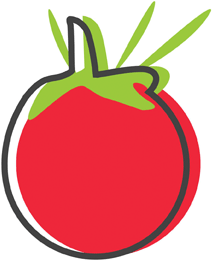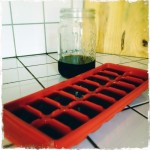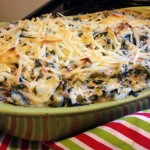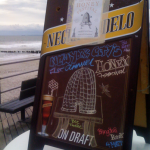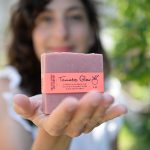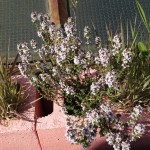by Paula D.
on November 21, 2025 8:39 am in Food

With the Beach 91st Street Community Garden food drive wrapped up, I’ve been thinking a lot about what is important to me, how I want to use my time, and what matters big picture. The outpouring of support from friends and neighbors was truly overwhelming. And with Thanksgiving next week, I’ve been thinking about what I am grateful for in this year of my life. So here goes…
I am grateful my mother is still alive. I haven’t written about this, and someday I will go deeper—but for now I’ll say my mother has end-stage COPD, and this past year has been exhausting and scary for our whole family. And still, beautiful things have come out of it. Like the reminder of the bond my sisters and I have, for the way “family first” and our love and commitment to each other were instilled in us by my mother and father. This is rare, I’ve learned. I’m thankful for my mother’s “good days,” like the day we got her in the wheelchair, brought her down to the boulevard, and she went shopping! I’m grateful for my father’s quiet, selfless kindness and his strength through all of this.
I am grateful for Tom.
I am grateful for the Beach 91st Street Community Garden group. I love gardening, the soil, the plants, the whole growing thing. But the real gift has been having a place to channel my energy into something that feels like it does some good / a community service.
I want to do something special with my life. I don’t totally know what that is yet, and I do feel like I’m getting a late start, but the garden feels like it’s pointing me in the right direction. I’m thankful for the people I’ve met through the garden. I hear “our community” a lot around town, and sometimes it sounds like it’s only referring to a small circle. Rockaway is more layered than that. I want to reach people I wouldn’t normally cross paths with and the outsiders, the misfits, the searching ones. The garden has been a conduit for these connections over the years.
I am grateful for my job at the DOE. It’s challenging on a lot of levels, and it’s tiring (to say the least), but through this new experience, I’ve grown and learned new skills. I’m grateful for the little kids I’ve become friends with—for their smiles and their open, candid minds. It’s powerful energy.
And I’m grateful for a paycheck every two weeks and health insurance. In the past, I took those two things for granted. I don’t anymore, and I’m honestly grateful to be humbled by that.
I am grateful for the freedom to write whatever I choose in the tomato column, whether it’s about surfing, the passing of my cat, or Grandma Mary’s artichoke pie recipe. And the writing is an outlet for me, creatively and therapeutically.
I am grateful for you, taking some moments out of your day to read my words.
by Paula D.
on November 20, 2025 2:58 pm in Recipes
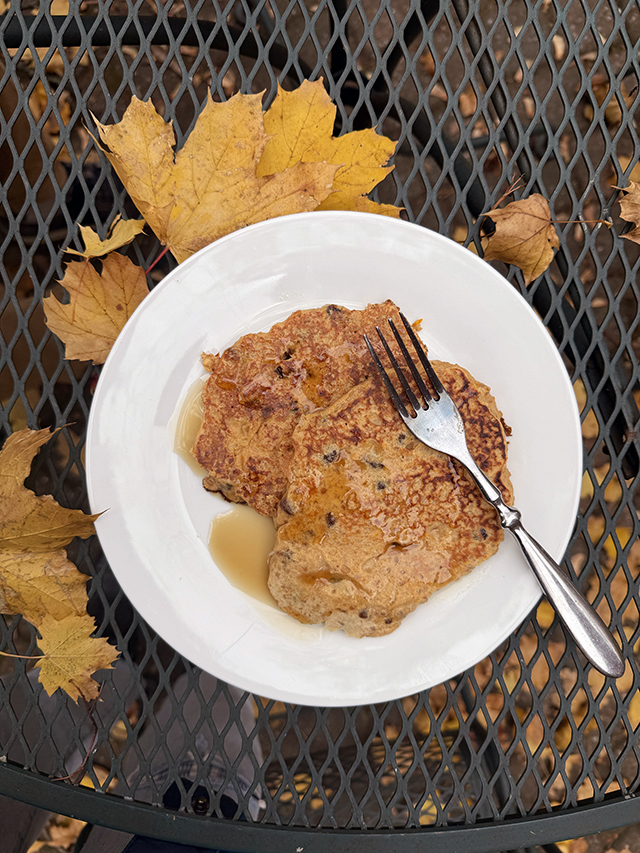
I stumbled upon a true wow-factor pancake recipe—perfect timing for the holidays and all our houseguests rolling through. They’re guaranteed to impress. These pancakes are healthy and decadent. Yes, both can be true. Well, they’re about as healthy as pancakes get, with a wheat (not white) flour base, and high-fiber bulgur that adds a unique, hearty texture you don’t get from standard pancakes. That texture pairs beautifully with thick, creamy ricotta, and the yogurt adds a tang. Orange zest is in the mix, and a drizzle of maple syrup ties it all together. Pear is my winter fruit (I’m calling it now), so top these pancakes with fresh slices. This recipe is satisfying and full of layered flavor. Stack them high, pour the hot coffee, and let the magic of a family holiday morning happen… with this breakfast at the center.
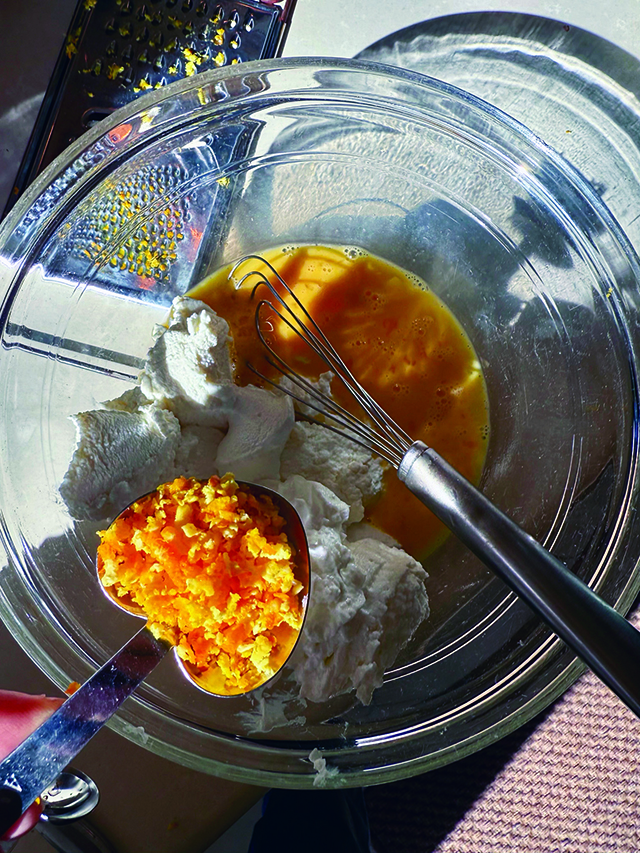
Ingredients:
(Serves 4)
- ½ cup bulgur (any grind)
- Salt
- 1cup ricotta
- 1cup yogurt
- 3 eggs
- 1 tablespoon grated orange zest
- 1 cup whole-wheat flour
- 2 tablespoons sugar
- 1½ teaspoons cinnamon
- ¼ teaspoon baking soda
- ½ cup raisins, optional
- Butter for frying
Sliced Pears
- Maple syrup, for serving
Preparation:
- Step 1: Put the bulgur and a pinch of salt in a bowl and add 1¼ cups boiling water. Stir once and let sit until more or less tender, 15 to 25 minutes. If any water remains, squeeze the bulgur in a cloth or put it in a fine-mesh strainer and press down on it.
- Step 2: Beat together the ricotta, yogurt, eggs and orange zest. In another bowl, combine the flour, sugar, cinnamon, baking soda and ½ teaspoon salt. Stir the dry ingredients into the ricotta mixture, blending well but not beating. Gently fold in the bulgur and the raisins.
- Step 3: Put a large skillet over medium heat and coat with butter. Spoon out the batter, making any size pancakes you like. Cook until bubbles form on the top and pop, 2 to 3 minutes. Carefully flip the pancakes and cook until they’re browned on the other side, a couple of minutes more. As they finish, transfer them to a plate. And more butter as needed for cooking. Serve with sliced pears and a drizzle of maple syrup.
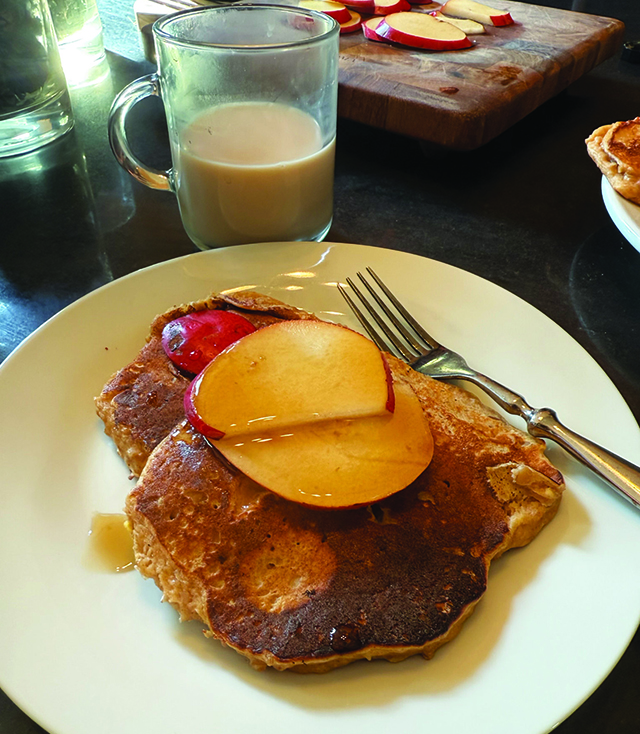
Add a freshness element and top with pear slices

Orange zest adds dimension, don’t forget it!
by Paula D.
on November 20, 2025 2:50 pm in Recipes
Since my peanut harvest, I’ve had peanuts on the brain, and I felt like being cozy with cookies. I decided to make a warm batch of classic peanut butter cookies. I didn’t overthink it, I went straight to the queen, Martha Stewart, and found a perfect recipe.
It calls for 1½ cups of peanut butter, and that made me think, “How did we get from peanuts to the smooth, creamy American treat we so dearly identify with from childhood?” According to the National Peanut Board, the Inca and Aztecs were the first to grind peanuts into a paste hundreds of years before America adopted it. The modern craze starts with Dr. John Harvey Kellogg (the cornflakes guy), who patented a nut “food compound” in 1895 for chronically ill medical patients!
Kellogg’s colleague, Joseph Lambert, built machines to roast and grind peanuts, launching the industry – prices dropped and a market emerged. World War I meat rationing pushed people toward peanuts, and then, came sliced bread in the 1920s – and the rest is history.
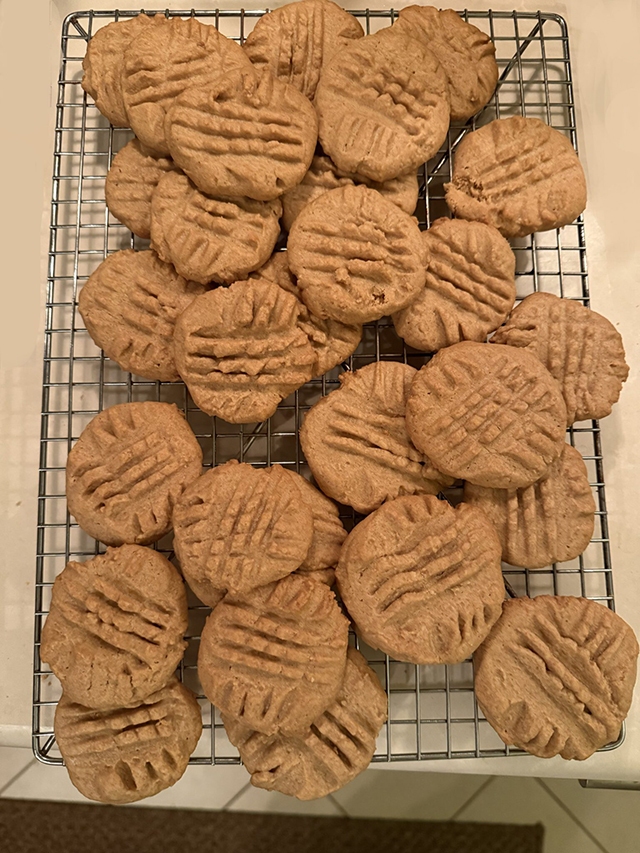
The Inca and Aztecs were the first to grind peanuts into a paste hundreds of years before America adopted the spread.
Classic Peanut Cookies
By Martha Stewart
Ingredients:
(makes about 4 dozen)
- 2 ½ cups of all-purpose flour (I used wheat flour and it worked great.)
- 1 ½ teaspoons baking soda
- ½ teaspoon salt
- 1 cup (2 sticks) unsalted butter, softened
- 1 cup granulated sugar
- 1 cup packed light-brown sugar
- 2 large eggs
- 1 ½ cups smooth peanut butter
Directions:
- 1. Whisk flour, baking soda, and salt in a medium bowl.
- Put butter and sugars into the bowl of an electric mixer fitted with the paddle attachment. Mix on medium speed until pale and fluffy, 2 to 3 minutes. Mix in eggs, then peanut butter.
- 2. Reduce speed to low. Add flour mixture in 3 batches, mixing until just combined after each addition. Cover with plastic wrap, and refrigerate for 30 minutes.
- 3. Preheat the oven to 350 degrees. Using a 1 1/2-inch ice cream scoop, drop dough onto baking sheets lined with parchment paper, spacing about 1 1/2 inches apart. Press cookies with fork tines to flatten and create the classic cross-hatch pattern. Bake until golden brown, 14 to 16 minutes. Let cool on sheets for 5 minutes. Transfer cookies to wire racks to cool.
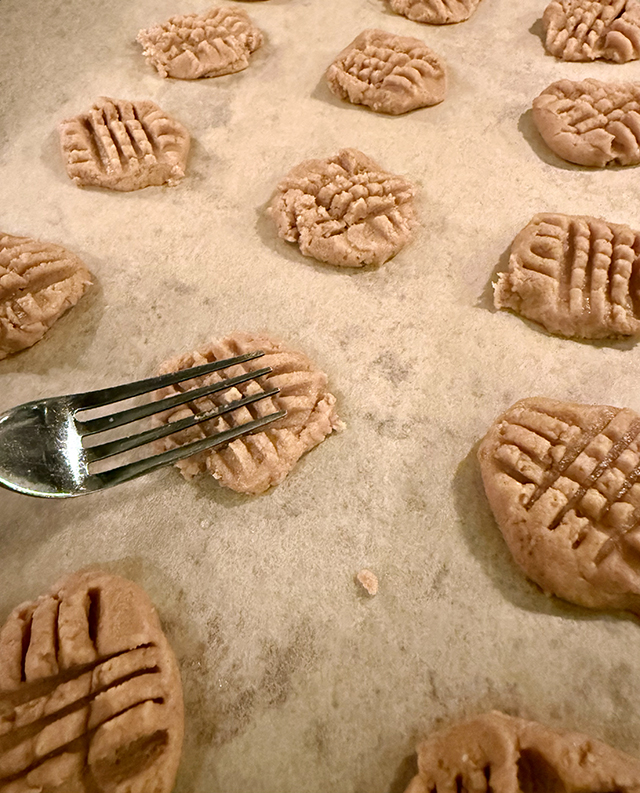
The classic peanut butter cookie pattern is a must.
The cookies can be stored in airtight containers at room temperature up to 3 days or freezed. If you make these peanut butter treats for Thanksgiving, tag @theglorifiedtomato so I can share your cookie glory!
Source: smithsonianmag.com, nationalpeanutboard.org
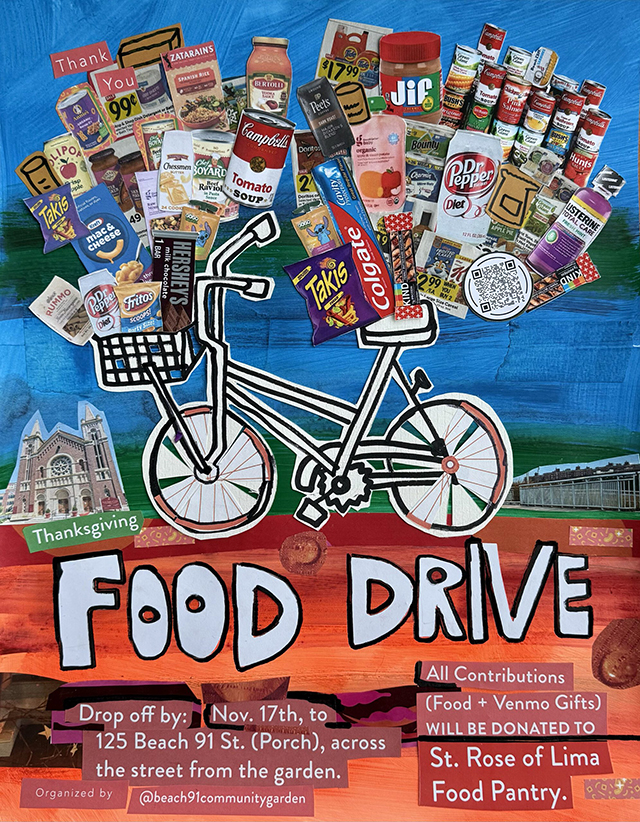
The Beach 91st Street Community Garden is organizing a Food Drive again this holiday season. 100% of donated food andmonetary gifts will go directly to the St. Rose of Lima Food Pantry. Here are the important details:
What the pantry needs most:
Non-perishables and canned goods with self-opening tabs
• Microwaveable/boil-water meals (soups, instant noodles, oatmeal, Chef Boyardee), baby food, small bottle beverages, instant coffee, protein drinks
• Travel-sized toiletries: hand warmers, band-aids, hand sanitizer, hand cream, wipes, gum, chapstick, feminine products, tissues, combs, etc.
Drop-off before Nov. 17: There is a bin on the porch at 125 Beach 91st St., Rockaway Beach, NY 11693 (across from the Beach 91st Street Community Garden).
Additionally, consider making a donation through Venmo (scan the QR code). Checks can be made payable to: Beach 91st Street Community Garden, Inc. (tax-deductible).
All contributions will be delivered to the St. Rose of Lima Food Pantry to support our neighbors for Thanksgiving and into the New Year. Food insecurity spikes during the holidays, and many in Rockaway are feeling it.
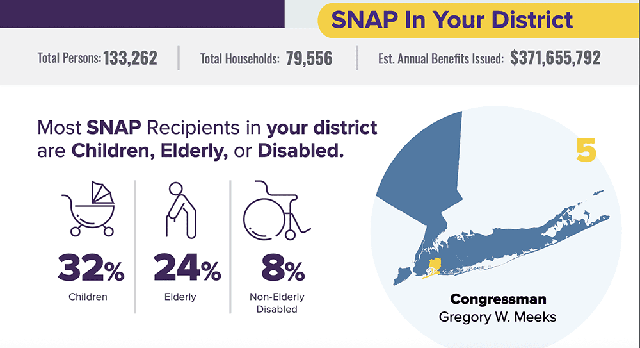
And with the government shutdown, SNAP (Supplemental Nutrition Assistance Program) ends Nov. 1 – its future is unclear. Now more than ever, we need to step up. SNAP is the largest anti-hunger program in the U.S. and dates back to the Great Depression. Most recipients today are seniors, families with kids, and people with disabilities – this is 42 million people in America. InRockaway and our congressional district, 133,262 people (79,556 households) rely on SNAP to feed themselves and their loved ones.
Spread the word—share the poster with your crew, and let’s fill the shelves at St. Rose of Lima. Let’s do this!











